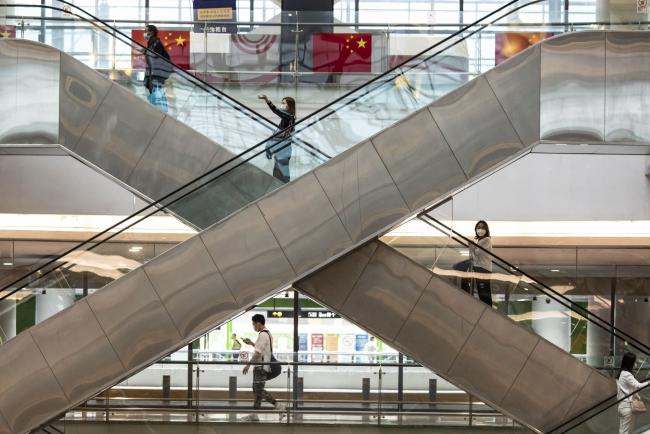(Bloomberg) -- China is working on plans to scrap a system that penalizes airlines for bringing virus cases into the country, according to people familiar with the matter, a sign authorities are looking for ways to ease the impact of the Covid Zero policy.
The State Council, which oversees China’s bureaucracy, recently asked government agencies including the civil aviation regulator to prepare for ending the so-called circuit-breaker mechanism, said the people, asking not to be identified because the matter is sensitive. The system sees airlines banned temporarily from specific routes into China for one-to-two weeks, depending on how many Covid-positive passengers they bring in to the country. A similar mechanism for Hong Kong was halted in July.
The request is part of a broader three-step plan devised mid-year to normalize China’s aviation industry, the people said, with the country effectively cut off from the rest of the world by its pandemic border curbs.
The first step was to increase the number of flights into China, which appears to already be in train. The Civil Aviation Administration of China, or CAAC, said last month the country will more than double international passenger flights between October and late-March from the same period a year ago, and carriers including China Eastern Airlines (NYSE:CEA) Corp. and China Southern Airlines Corp. have said they’re already looking at increasing flights.
China’s Biggest Airlines Plan More International Flights at Last
The focus now appears to have moved to step two, with senior leaders recently asking regulators to draw up a game plan for easing the circuit breaker rule. The third step would be facilitating a full return to normal aviation traffic, the people said. It’s unclear what the timeline is for the implementation of these two steps.
The State Council and CAAC didn’t immediately respond to requests for comment.
Evidence China is even considering changes that would ease its global isolation would be scrutinized by investors, with Chinese equities near multi-year lows because of the economic damage wrought by Covid Zero’s snap lockdowns, testing drives and border restrictions.
Shares of airlines, including China Eastern and China Southern, extended gains in Hong Kong on the flight ban news, while the yuan climbed in offshore trading.
An unverified screenshot circulating on social media claiming a broad reopening plan was being considered sparked a $450 billion speculative rally in stock markets this week. Soon after, China’s top health body reaffirmed its commitment to the zero-tolerance virus approach.
How a Mysterious China Screenshot Spurred $450 Billion Rally
In another sign China is at least cognizant of the impact of its restrictions at the border, officials are debating whether to reduce the amount of time people coming into the country must spend in mandatory quarantine, Bloomberg News reported in October. Bureaucrats are looking at cutting the period to two days in a hotel and then five days at home, people familiar with the matter said. That’s down from 10 days of isolation on entry into the country, which includes a week confined to a hotel room.
China’s current circuit-breaker policy makes getting into the country difficult for many travelers, even after it was tweaked in August. Inbound routes are halted for one week if the percentage of infected passengers on a flight hits 4%, and it’s a two-week suspension if the rate reaches 8%. The previous policy triggered a two-week stoppage for a 5% infection rate and a month’s suspension at 10%.
